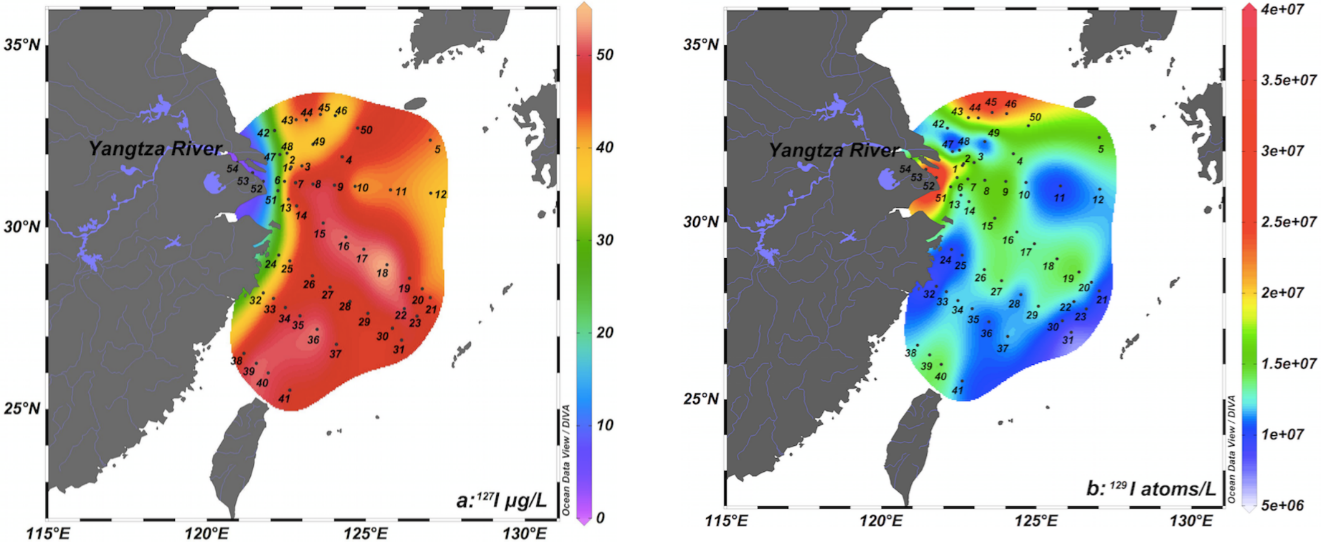In the recent years, the increasing nuclear power plants along the coast of the East China Sea (ECS) and the Fukushima nuclear accident happened in March 2011 have attracted high attention in the vicinity of the ECS. In particular, nuclear environmental safety and impact of nuclear activities are highly concerned. Due to the continuous pollutants and nutrients discharged into the East China Sea and Yellow Sea, the recurrent red tides has caused wide public concern. The analysis of anthropogenic iodine-129 and its species could provide a new insight to evaluate the effect of pollutant emissions.
Surface water samples collected from the East China Sea (ECS) in August 2013 were analyzed for 129I, 127I and their inorganic chemical species for the first time by Professor HOU Xiaolin’s team in the Institute of Earth Environment, Chinese Academy of Sciences in collaboration with East China Normal University. The measured 129I/127I ratio is 1–3 orders of magnitude higher than the pre-nuclear level, which is indicative of the dominant anthropogenic sources, but fall into the fallout level of the regions with similar latitude. The contribution of the nuclear power plants in coastal region in the ECS and the Fukushima accidents is insignificant. The distribution of 129I in the ECS shows that 129I in the East China Sea is dominantly originate from riverine water input, mainly from Yangtze River, The distribution for 129I in surface seawater in the East China sea clearly demonstrate the interaction of the fresh riverine water input with the sea currents of Kuroshio Current and Taiwan Current. Besides, a relative higher 127I−/127IO3− ratios and 129I−/129IO3− ratios in the ECS were observed in some locations, which match with the known region with anoxic condition and red tide.
This work provides essential data for evaluation of the nuclear environmental safety along the coast of the ECS. Meanwhile, it can be used for investigation of mixing and movement of water masses, as well as the marine environment in this region.

Figure 1. Spatial distribution of 127I (a) and 129I (b) concentrations in the surface water in the ECS. This figure was generated using free software ODV4.7.8 (Schlitzer, R., Ocean Data View, http://odv.awi.de, 2015).
This work has been published on the peer-reviewed international journal, Scientific Reports(Dan Liu, Xiaolin Hou, et al. 2016. 129I and its species in the East China Sea: level, distribution, sources and tracing water masses exchange and movement. Scientific Reports, DOI: 10.1038/srep36611).
(Reported by Wang Yanyun and Zhang Luyuan)